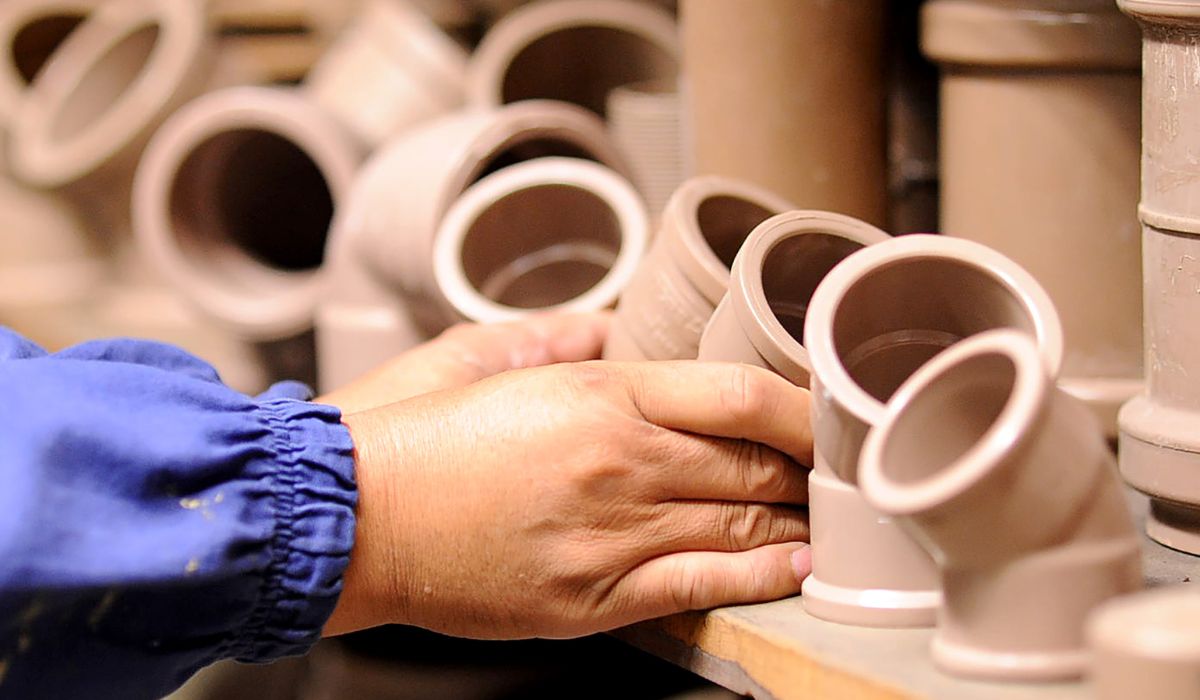Understanding DWV Pipes & Fittings: A Comprehensive Guide

Drain, Waste, and Vent (DWV) systems are essential components of any plumbing infrastructure. They ensure the efficient removal of wastewater and the proper venting of sewer gases. Understanding DWV pipes and fittings is crucial for anyone involved in plumbing, whether you’re a professional plumber, a contractor, or a DIY enthusiast. This comprehensive guide will delve into the types, materials, and applications of DWV pipes and fittings, as well as best practices for installation and maintenance.
1. What is a DWV System?
Overview
A DWV system is designed to remove wastewater and sewage from a building and vent sewer gases to the outside. It consists of three main components:
- Drain Pipes: Carry wastewater from fixtures to the sewer or septic system.
- Waste Pipes: Transport sewage from toilets and other waste-producing fixtures.
- Vent Pipes: Allow sewer gases to escape and provide air pressure to ensure proper drainage.
Importance
The DWV system is critical for maintaining sanitary conditions and preventing the buildup of harmful gases. Properly designed and installed DWV systems ensure efficient wastewater removal and prevent plumbing issues such as clogs and leaks.
2. Types of DWV Pipes
PVC (Polyvinyl Chloride)
PVC is the most commonly used material for DWV pipes due to its durability, affordability, and ease of installation. It is resistant to corrosion and chemical damage, making it ideal for residential and commercial applications.
ABS (Acrylonitrile Butadiene Styrene)
ABS pipes are another popular choice for DWV systems. They are lightweight, easy to install, and resistant to impact and chemical damage. ABS pipes are typically used in residential plumbing and are known for their black color.
Cast Iron
Cast iron pipes are known for their strength and durability. They are often used in commercial and industrial applications where high pressure and heavy loads are common. Cast iron pipes are also effective at reducing noise from flowing water.
Copper
Copper pipes are less common in modern DWV systems but are still used in some applications due to their durability and resistance to corrosion. They are more expensive than PVC and ABS pipes and require soldering for installation.
Galvanized Steel
Galvanized steel pipes were commonly used in older plumbing systems but have largely been replaced by more modern materials. They are prone to corrosion and rust, which can lead to leaks and reduced water flow.
3. Types of DWV Fittings
Elbows
Elbows are used to change the direction of the pipe. They come in various angles, such as 90 degrees and 45 degrees, to accommodate different plumbing layouts.
Tees
Tees are used to connect three pipes at a junction, allowing for the branching of the plumbing system. They are available in different configurations, such as sanitary tees and wye fittings.
Couplings
Couplings are used to join two sections of pipe together. They can be straight or reducing, depending on whether the pipes being connected are of the same or different diameters.
Adapters
Adapters are used to connect pipes of different materials or sizes. For example, a PVC-to-copper adapter allows for the connection of a PVC pipe to a copper pipe.
Cleanouts
Cleanouts provide access to the DWV system for cleaning and maintenance. They are typically installed at key points in the plumbing system to allow for easy removal of clogs and debris.
Traps
Traps are U-shaped fittings that prevent sewer gases from entering the building. They hold a small amount of water, creating a seal that blocks the gases while allowing wastewater to flow through.
4. Installation Best Practices
Planning and Design
Proper planning and design are crucial for an efficient DWV system. Consider the layout of the building, the location of fixtures, and the path of the pipes. Ensure that the system complies with local building codes and regulations.
Slope and Venting
A top quality DWV pipe must be installed with the correct slope to ensure proper drainage. A general rule of thumb is a slope of 1/4 inch per foot for horizontal pipes. Venting is equally important to prevent the buildup of sewer gases and maintain air pressure in the system.
Secure Connections
Ensure that all pipe connections are secure and leak-free. Use appropriate fittings and adhesives for the material being used. For example, PVC pipes require solvent cement, while copper pipes require soldering.
Accessibility
Install cleanouts at strategic points in the system to allow for easy access during maintenance and repairs. Ensure that traps are installed correctly to prevent sewer gases from entering the building.
Testing
After installation, test the DWV system for leaks and proper drainage. This can be done by filling the system with water and checking for any signs of leakage. Address any issues before finalizing the installation.
5. Maintenance and Troubleshooting
Regular Inspections
Regularly inspect the DWV system for signs of wear and tear, such as leaks, corrosion, and blockages. Address any issues promptly to prevent further damage and ensure the system’s efficiency.
Cleaning
Clean the DWV system periodically to remove debris and prevent clogs. Use appropriate tools, such as drain snakes and hydro-jetting equipment, to clear blockages without damaging the pipes.
Repairs
When repairs are needed, use the correct materials and techniques to ensure a lasting fix. For example, use pipe patches or replacement sections for damaged pipes and ensure that all connections are secure.
Professional Assistance
For complex issues or major repairs, consider hiring a professional plumber. They have the expertise and equipment to diagnose and fix problems efficiently, ensuring the longevity of the DWV system.
Conclusion
Understanding DWV pipes and fittings is essential for anyone involved in plumbing. By choosing the right materials, following best practices for installation, and maintaining the system regularly, you can ensure efficient wastewater removal and prevent plumbing issues. Whether you’re a professional plumber or a DIY enthusiast, this comprehensive guide provides the knowledge needed to work with DWV systems effectively.







